By Eric Hammel
The Israeli Defense Force’s (IDF’s, or Zahal’s) strategic invasion of the West Bank region of Jordan began at 5 pm on June 5, 1967. The assault was launched by one of two armored brigades attached to the Peled Armored Divisional Task Force (Ugdah Peled), part of the IDF’s Northern Command. Initially, the attack was aimed merely at neutralizing Royal Jordanian Army 155mm artillery fire that was striking the Israeli Air Force’s (IAF’s) strategically vital Ramat David Air Base and numerous Israeli villages and towns within range of Jordanian Samaria.
Ugdah Peled’s planning started from scratch. Absorbed for days with preparing to counter an expected all-out Arab invasion of northern Israel from the Syrian Golan Heights, the bulk of Ugdah Peled was given somewhat under five hours to figure out how to invade Samaria, and then to do it. It was not until noon on June 5 that the division commander, Brig. Gen. Elad Peled, was himself called in from a patrol along the Syrian frontier to oversee the planning.
Ugdah Peled’s immediate objective was obvious to anyone who could read a map: the regional center of Jenin. Although the city stood on the Jordanian side of the line, it was geographically at the southern terminus of Israel’s Jezreel Valley. The Jordanian 155mm artillery that was endangering so many Israelis was based nearby, and that certainly was Ugdah Peled’s chief objective.
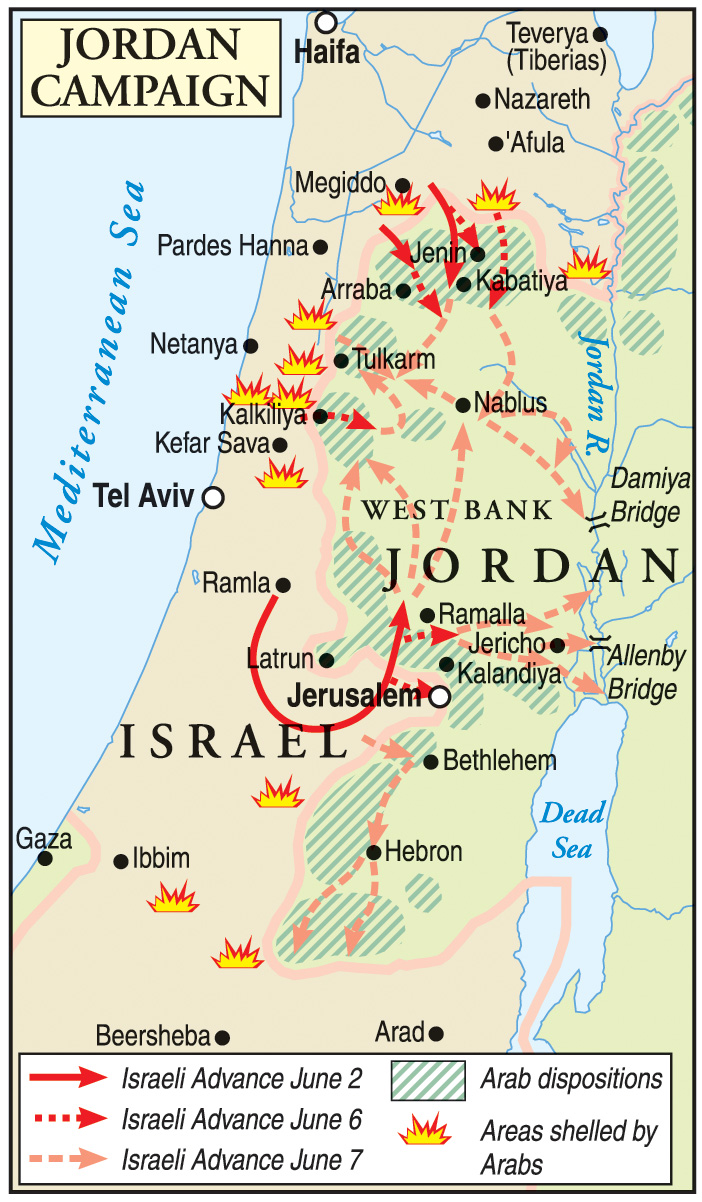
At the outset, General Peled and his small staff faced two problems. The chief one was reorienting and moving the bulk of the task force a significant distance, and the other was figuring out how and where to break into Samaria. The latter concern was driven by the topography around Jenin. The city arose from a major road junction in a little valley dominated by hills to the north, west, and south. The best way into the valley was from the southeast, but that would entail a wide encirclement from the northeast that might in turn be cut off by a counterattack from either the city itself or a Jordanian infantry brigade based farther to the east.
To assist in offsetting a potential counterattack, the IDF’s motorized Gavish Infantry Brigade, which was screening the Israeli town of Beit Shean opposite the Jordan River, was set in motion at 4 pm on June 5. Its mission was to tie down the Jordanian El Yarmouk Infantry Brigade in the northeastern corner of Samaria. Under the direct control of IDF General Headquarters, the Gavish Infantry Brigade crossed into the West Bank hard against the Jordan River and advanced about 16 kilometers before digging in for the night. In the first hour of this diversionary advance, only a few shots were exchanged at long range because the El Yarmouk Infantry Brigade opted to protect the strategic Damiya Bridge across the Jordan River by remaining in its static defensive positions—exactly what the Israelis hoped it would do.
While the Jordanians in northeastern Samaria were being forced to keep an eye on the Gavish Infantry Brigade, the Jordanian Princess Alia Infantry Brigade was also obliged to sit still in western Samaria because IDF Central Command’s Shaham Infantry Brigade made threatening moves from across the frontier. The Shaham Infantry Brigade eventually intended to storm into Samaria by way of Kalkiliya, but for the time being it only needed to look busy to get the attention of the Jordanians across the way and thus hold them in place.
While the Jordanians reacted and fretted well to the Israeli east and southwest of Jenin, two columns of Israeli Super Sherman tanks and armored infantrymen from Lt. Col. Moshe Bar-Kochva’s armored brigade crossed into Samaria near Jenin at 5 pm. The right-hand column, which was composed of a Super Sherman battalion bolstered by one armored-infantry company in M3 half-tracks, was assigned another more-or-less diversionary role. It crossed into Samaria near the Israeli-Arab town of Umm el-Fahm and overran a small border post held by a platoon of the Khalid Ibn el-Walid Infantry Brigade. From there the Israeli column moved without opposition southeastward toward Ya’bad, the largest village in the area. Although still more than 6 kilometers from Ya’bad, this column stopped at nightfall and established a temporary defensive position. This movement obliged the commander of the Khalid Ibn el-Walid Infantry Brigade, who was headquartered in Jenin, to keep one of his infantry battalions in this area and therefore out of the main event.
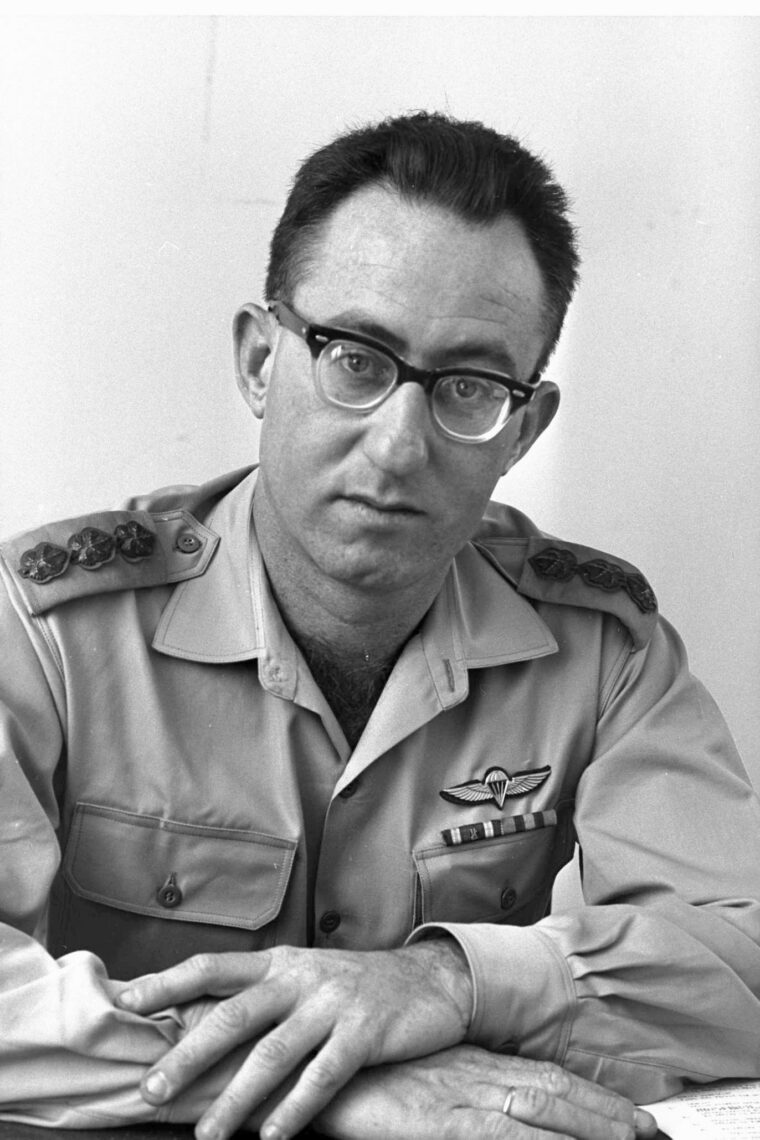
The main event was the Israeli penetration toward Jenin by the Bar-Kochva Armored Brigade’s main body. It consisted of a battalion of Super Shermans, most of the armored-infantry battalion, and the brigade headquarters and support units, including a reconnaissance battalion equipped with jeeps and AMX-13 14.5-ton light reconnaissance tanks. This force, which was led by the reconnaissance and Super Sherman battalions, crossed the frontier near the Israeli town of Megiddo and crashed right over a Royal Jordanian Army border post. The platoon of Jordanian soldiers defending the post was stunned by the sudden onset of the attack. They did not fire until the Israeli tanks were gone and the armored-infantry half-tracks were rolling through the breach. The result was a brief pitched battle between the Jordanians and a platoon of Israeli armored infantrymen. At about the time this contest was tilting in favor of the Israelis, Jordanian 155mm artillery began probing the area. By then, the Israeli AMX-13s and Super Shermans had climbed onto a decent road that exited the area, and most of the armored-infantry half-tracks were right behind them.
Next on the Israeli hit list were the villages of Yamun and Kfar Dan, northwest of Jenin. The Israeli column split into two tank-infantry task forces and entered both villages simultaneously at 7:30 pm. The villages were outposted, but nearly all the Jordanian soldiers retreated and only a few shots were fired. (These and other withdrawals were actually consistent with the Jordanian defensive plan; these tiny squad and platoon garrisons from the 20th Jordanian Infantry Battalion were to come together far to the rear and deliver a counterattack as soon as the Israelis were committed to one axis of advance or another.) In Yamun, the objective of the attack was achieved when an entire battery of 155mm field guns fell intact into Israeli hands.
The Israeli column reformed at dusk and continued to the southeast, apparently toward the gap in the hills around Jenin. In short order, as daylight failed altogether, the Israeli spearhead crossed the Jenin-Nablus highway. The black-topped two-lane road ran to Jerusalem by way of Ramallah and then on to the Judean city of Hebron.
The first Jordanian tank the Israeli column encountered was an M-47 Patton from the 12th Jordanian Independent Tank Battalion. It was one of a company of 14 Pattons dispatched to bolster the Khalid Ibn el-Walid Infantry Brigade. This particular one, however, had been set afire minutes earlier by a roving IAF fighter-bomber as the Patton company raced to Jenin from its base at Nablus.
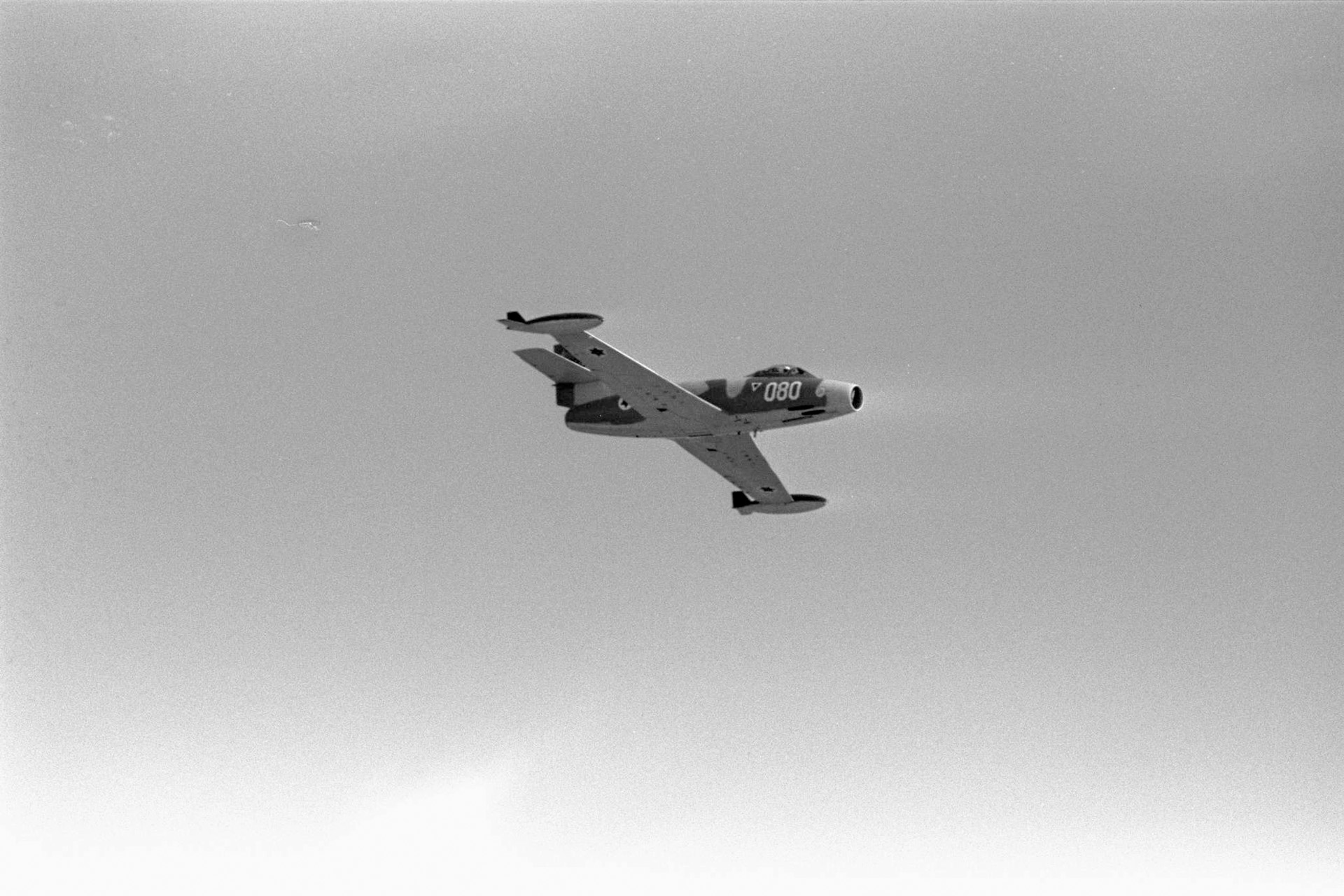
So far, so good for the Israelis. The IDF’s advances in the far north had been relatively easy. The Jordanians had been caught looking the other way in all three cases, and the attention of their commanders was fully occupied with battles raging to the south, in Jerusalem. By the time the Israelis broke into northern Samaria, the regional strategic reserve, the crack 40th Jordanian Armored Brigade, had already been put in motion from around the Damiya Bridge toward Jericho, and it was under air attack. In addition, the 8th Iraqi Motorized-Infantry Brigade, which might have been rushed to northern Samaria from northeastern Jordan, had been gutted by Israeli air attacks throughout the afternoon. There was no help on the way from Syria either, as Jordan’s erstwhile Arab brothers in Damascus had not even responded to pleas that a brigade or two of their army be dispatched to Jordan.
The Bar-Kochva Armored Brigade’s right-hand column, which had entered Jordan opposite Umm el-Fahm at 5:00 pm, pressed on toward the town of Ya’bad after stopping in the open for several hours. Presumably, the halt was to allow the Jordanians to counter the threat with troops they might otherwise have sent to defend Jenin against the Israeli brigade’s main body. If that is so, then the Israeli plan succeeded a little too well.
There was a tough fight for several hours at a fortified hill, but the Israelis eventually triumphed. Ya’bad itself was occupied at dawn on June 6, and cleared of Jordanian soldiers. Thereafter, the column picked up the Jenin-Nablus highway and rolled back a short distance toward Jenin until it ran into an entirely unexpected defensive zone around the town of Arraba, 10 kilometers southwest of Jenin. The Israeli Super Shermans advanced until they provoked a spirited response from well-entrenched Jordanian infantry and antitank guns supported by a company of Pattons from the 12th Jordanian Independent Tank Battalion. Three frontal attacks failed before the wounded Super Sherman battalion backed off. There was no help for miles around, and no way for the Super Shermans to outflank the entrenched Pattons and antitank guns from the narrow, hemmed-in roadway. The Israelis just halted in place and tried to think of a solution.
After conducting a rather slow, cautious advance in the dark southeastward from Yamun, the head of the main body of the Bar-Kochva Armored Brigade nosed into the town of Birkin at 2 am on June 6. There, the brigade established a base camp, and Lt. Col. Bar-Kochva then ordered his tanks to advance westward into the Dotan Valley, just across the hills immediately to the south of Jenin. It was Bar-Kochva’s intention to attack Jenin from the south rather than along the obvious route from the southeast, which the Jordanians probably had defended in depth.
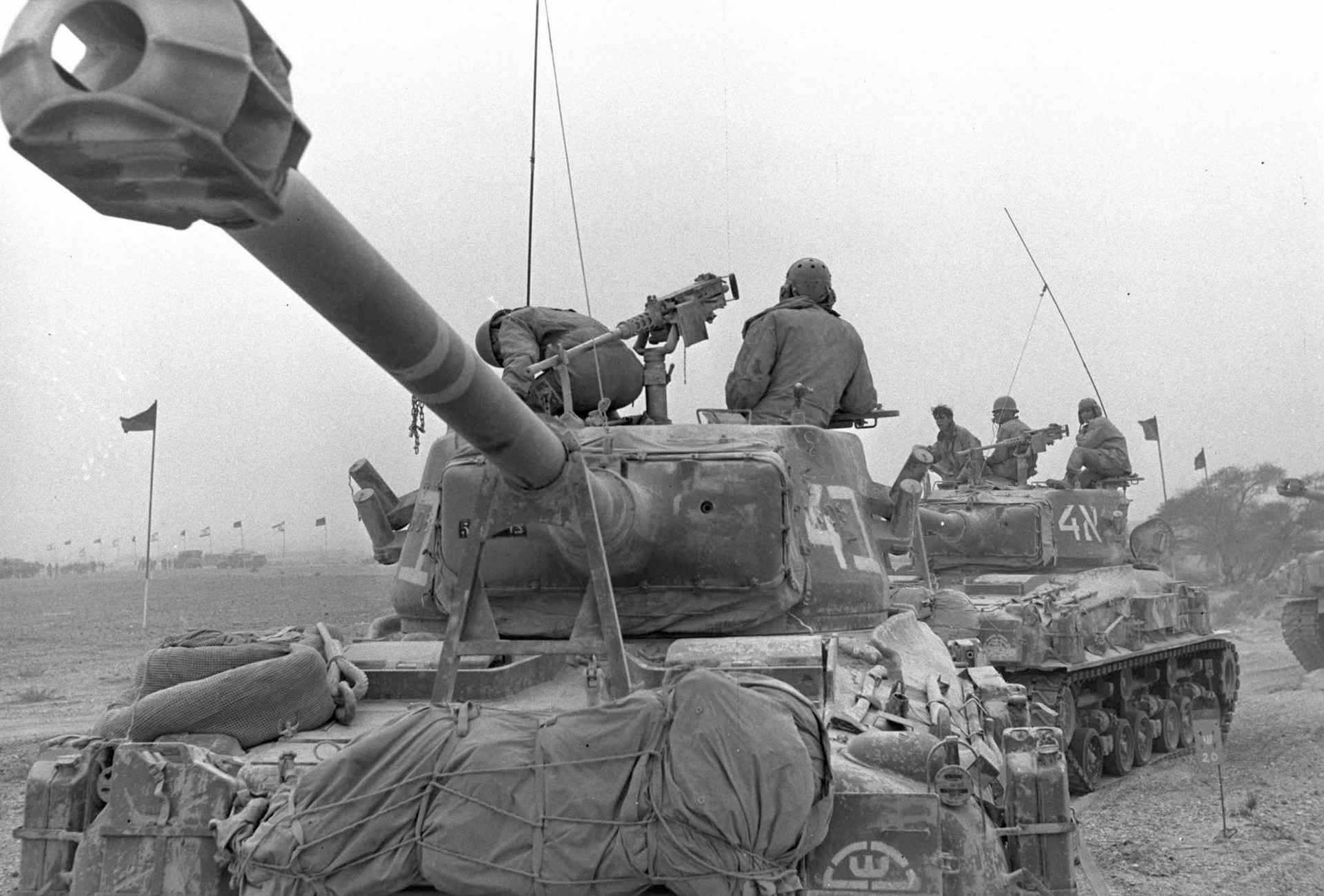
Unbeknownst to Bar-Kochva, the Jordanians had also established defenses along this “unexpected” line of approach with considerable skill and in some depth. Jordanian antitank guns and 13 Pattons from the 12th Jordanian Independent Tank Battalion were deployed in three overlapping lines on the heights south of the city. Their guns could reach as far as 3 kilometers into the flat Dotan Valley. This the Israeli Super Sherman crews learned to their dismay when, at 3 am, they unwittingly attacked straight into the Jordanian guns without any support or preparatory bombardment. Very quickly, Jordanian Pattons fired their 20-pounder main guns down from the cover of hillside olive groves and broke up the Israeli attack. A second, unsupported attempt by the Israelis to drive forward—this time only to rescue injured tank crewmen and recover several disabled Super Shermans—was also beaten back with even greater loss.
Bar-Kochva then dreamed up a ruse. At 4:30 am, just as the early dawn light began infiltrating the battlefield, the Israeli tanks began pulling back in such a way as to give the impression that they were withdrawing for good. Further, they left without retrieving the large number of damaged Super Shermans that littered the valley floor. Sensing victory, the Jordanian Patton company pursued the broken and fleeing Israeli tank companies.
As the Pattons swept past the abandoned Super Shermans, Israeli tank gunners who were lying doggo opened fire with their 105mm main guns. They thus accomplished—in the open, in broad daylight, and at very short range—what they had been unable to accomplish in the dark against hull-down Pattons at much longer ranges. Eight of the Pattons, which were all fitted out with vulnerable external long-range gasoline tanks, were knocked out in the first encounter. Nevertheless, the remaining Jordanian tank crews rallied and continued the pursuit of the slowly withdrawing Israeli main body. It was all to no avail, for shortly all of the Pattons were destroyed or disabled. At that point, there seemed to be precious little that could effectively stop the Bar-Kochva Armored Brigade from reaching Jenin from the Dotan Valley.
The Israelis returned to the attack after destroying the Patton company, but the Jordanian infantrymen and antitank gunners fought hard and well, throwing the Israelis back. At length, several local attacks succeeded, but several others failed. It was not until around 7 pm that the Israelis had finally chipped away sufficiently at the Jordanian defenses to break all the way through them. The Super Shermans then charged directly toward Jenin while the armored infantry stopped to mop up the outer defenses.
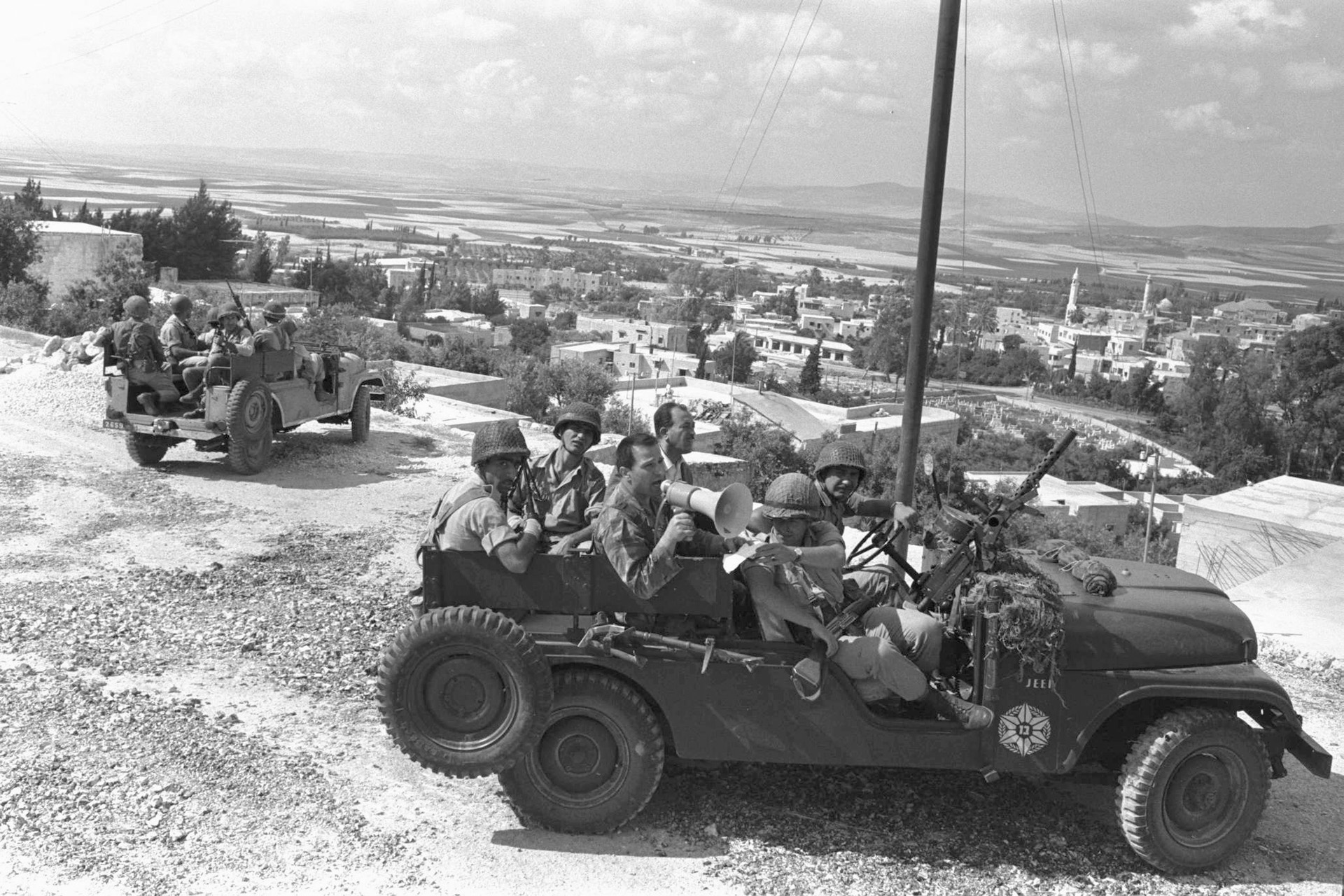
By the time the Bar-Kochva Armored Brigade broke through from the Dotan Valley, Ugdah Peled’s motorized Avnon Infantry Brigade had arrived in the area along the road previously opened by Bar-Kochva’s main body. It attacked into Jenin by way of the easier southeast axis just as Bar-Kochva’s Super Shermans were making their final approach from the south.
In a classic Israeli assault on a built-up area, the tanks swept up and down the streets of the city several times, firing their guns at roadside buildings while the infantrymen conducted a careful house-to-house clearing operation. The only serious opposition was encountered when the Israelis approached the British-built police fortress, but it fell when several Super Shermans opened fire with their 105mm main guns at point-blank range. Bar-Kochva, who was wounded in the battle for the police fortress, declared Jenin secure at 7:30 pm.
Just as the garrison of the Jenin police fortress was surrendering, word arrived from the Bar-Kochva Armored Brigade reconnaissance commander that at least one battalion of the 40th Jordanian Armored Brigade—with an estimated 60 Patton tanks—was rapidly approaching the city from the southeast.
The Jordanian Pattons came on so quickly that the Israeli reconnaissance jeeps and AMX-13s were trapped in the Dotan Valley town of Kabatiya. The Jordanians, who were advancing up the Tubas Loop Road from the direction of Tubas, managed to surround the Israeli reconnaissance force, but not to overwhelm it. Nevertheless, the bulk of the Pattons kept driving toward Jenin.
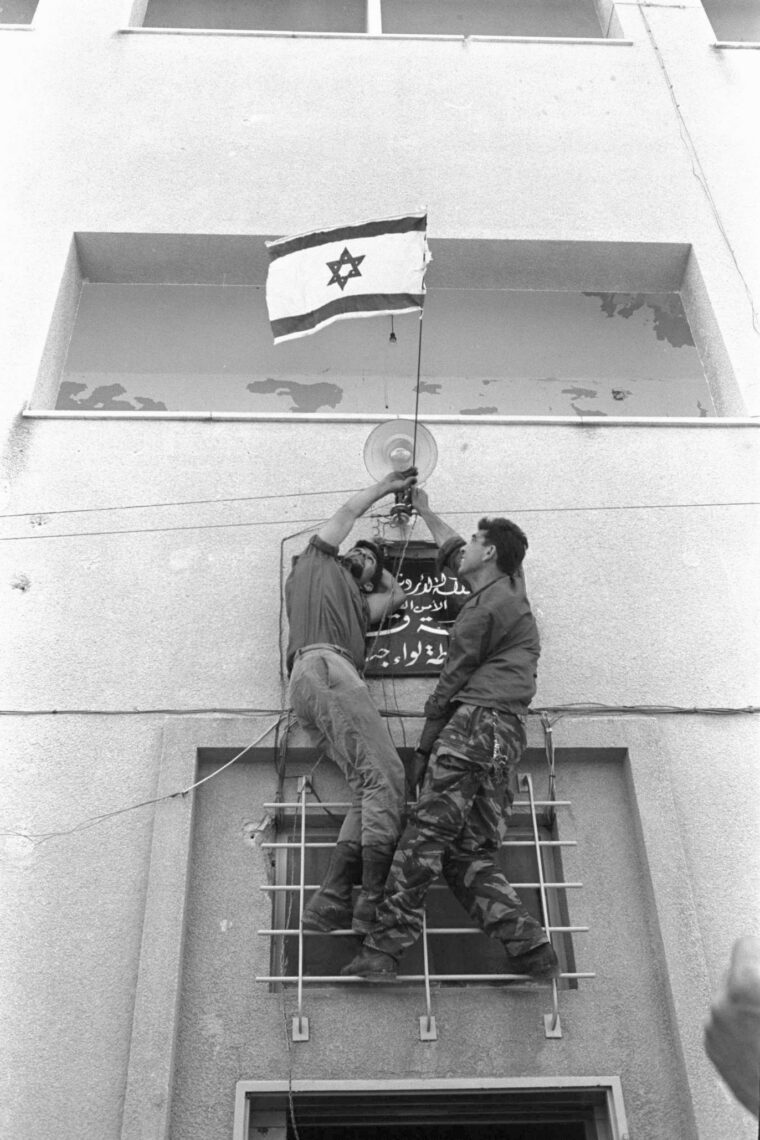
The Israelis were faced with a complex set of problems. Although Jenin had been declared secure, there were still large pockets of resistance to be overcome throughout the town. Also, Bar-Kochva’s Super Shermans were running low on fuel and ammunition. There was some solace in the fact that the Jordanians had all but abandoned the hedgehog defenses that had been holding up Bar-Kochva’s second column at Arraba, 10 kilometers southwest on the main Jenin-Nablus highway. Even though this welcome reinforcement would soon be arriving, the second Israeli Super Sherman battalion also suffered from a lack of fuel and ammunition.
To keep the Jordanian Pattons off balance and thus unable to exploit their swift and surprising advance, Bar-Kochva ordered an immediate counterattack toward Kabatiya by the depleted Super Sherman battalion in Jenin. This attack succeeded in its prime mission of stopping the Jordanians, who moved from the road to the hills in good order. The Israeli counterattack did not break through the Jordanian Pattons to relieve the trapped reconnaissance elements, and it did not cause serious harm to the Jordanian tank battalion. It did succeed in nearly destroying itself against the 20-pounder guns of the Jordanian Pattons, which accounted for 17 Super Shermans and 13 other Israeli vehicles destroyed or disabled.
As the stunned Super Sherman battalion withdrew from in front of the halted but intact Jordanian Patton battalion, Bar-Kochva was able to arrange a covering barrage by the bulk of Ugdah Peled’s artillery battalion, which had followed the Avnon Infantry Brigade down to Jenin. The artillery did not cause the Jordanians much damage or loss, but it made them cautious and allowed Bar-Kochva’s Super Shermans to reform. Also at this time, Bar-Kochva’s column from Arraba managed to reach the main body of the brigade.
Still, Israeli problems were mounting. Not only had one of Bar-Kochva’s Super Sherman battalions been gutted, but ammunition and fuel supplies in the tanks were down to critical levels. Actually, there was plenty of fuel and ammunition available, but there had been no time to load it into the Super Shermans. Moreover, the Jordanian soldiers still holding out in Jenin must have received word of the 40th Jordanian Armored Brigade’s approach because they chose this critical juncture to try to drive the Avnon Infantry Brigade from the city. All the while, the Bar-Kochva Armored Brigade’s reconnaissance elements trapped behind Jordanian lines were screaming for help.
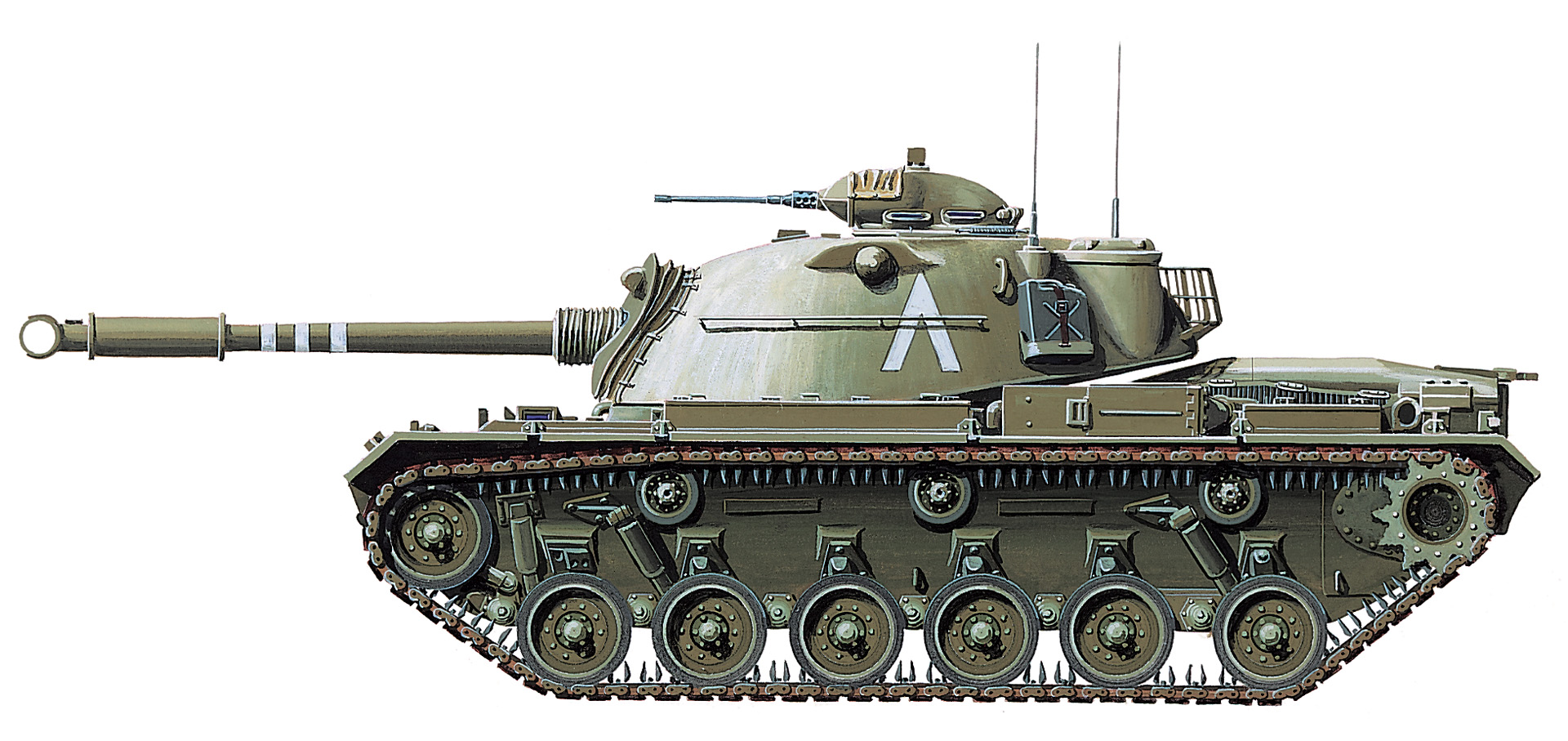
Bar-Kochva tried one more counterattack, but it had advanced only a short way toward Kabatiya when it was beaten back by the perfectly situated and coolly led Pattons. It was all the Israeli artillery could do to contain the Jordanian Pattons as they surged after the departing Super Shermans.
The Israeli Air Force decided the contest south of Jenin. It took until the late afternoon for Brig. Gen. Peled to convince the IAF mission planners to pull ground-attack aircraft from other sectors, but finally a strike force of Fouga-Magister ground-support jets and Ouragan fighter-bombers arrived over the Dotan Valley. These warplanes accomplished from the air what the Bar-Kochva Super Shermans had been unable to accomplish on the ground. They got behind the hull-down Jordanian Pattons and held them at bay with bombs, rockets, and cannon.
Using the respite afforded by the near-continuous air strikes, Israeli tanks and armored infantry crept forward over the open valley floor to salvage whatever lives and fighting vehicles they could. The operation was well under way when the Jordanians caught on, and Pattons on the heights threw most of the Israelis back with accurate long-range fire. Despite this, an Israeli Super Sherman company passed around the Jordanian eastern flank and drove a wedge to the beleaguered reconnaissance force, which scuttled to safety.
The air attacks continued into the night, giving the Israelis a further respite to refuel and resupply the surviving tanks and other vehicles. A night attack was contemplated, but the Israeli tank crewmen needed sleep, and ordnance crews were promising that they could restore a significant number of damaged Super Shermans if given more time. So it was decided to wait until dawn to launch an all-out attack to clear Kabatiya and secure the vital crossroads.
At first light on June 7, following a 15-minute artillery barrage and 30-minute air bombardment, the rather ragged Bar-Kochva Armored Brigade opened what its commander hoped would be the final battle for Kabatiya. At 4:45 am, the Israeli Super Shermans broke from cover and advanced across the open Dotan Valley floor all the way to the Kabatiya crossroads. There were no Jordanian Pattons to be found. In fact, there was no sign of life anywhere. Unbeknownst to the Israelis, nearly the entire Royal Jordanian Army West Bank Force in the region was withdrawing, retreating, or had collapsed. The IDF’s toughest test and only near defeat of the Six Day War had ended quietly because of a stunning Israeli victory in the city of Jerusalem and lightning Israeli penetrations elsewhere in the West Bank.
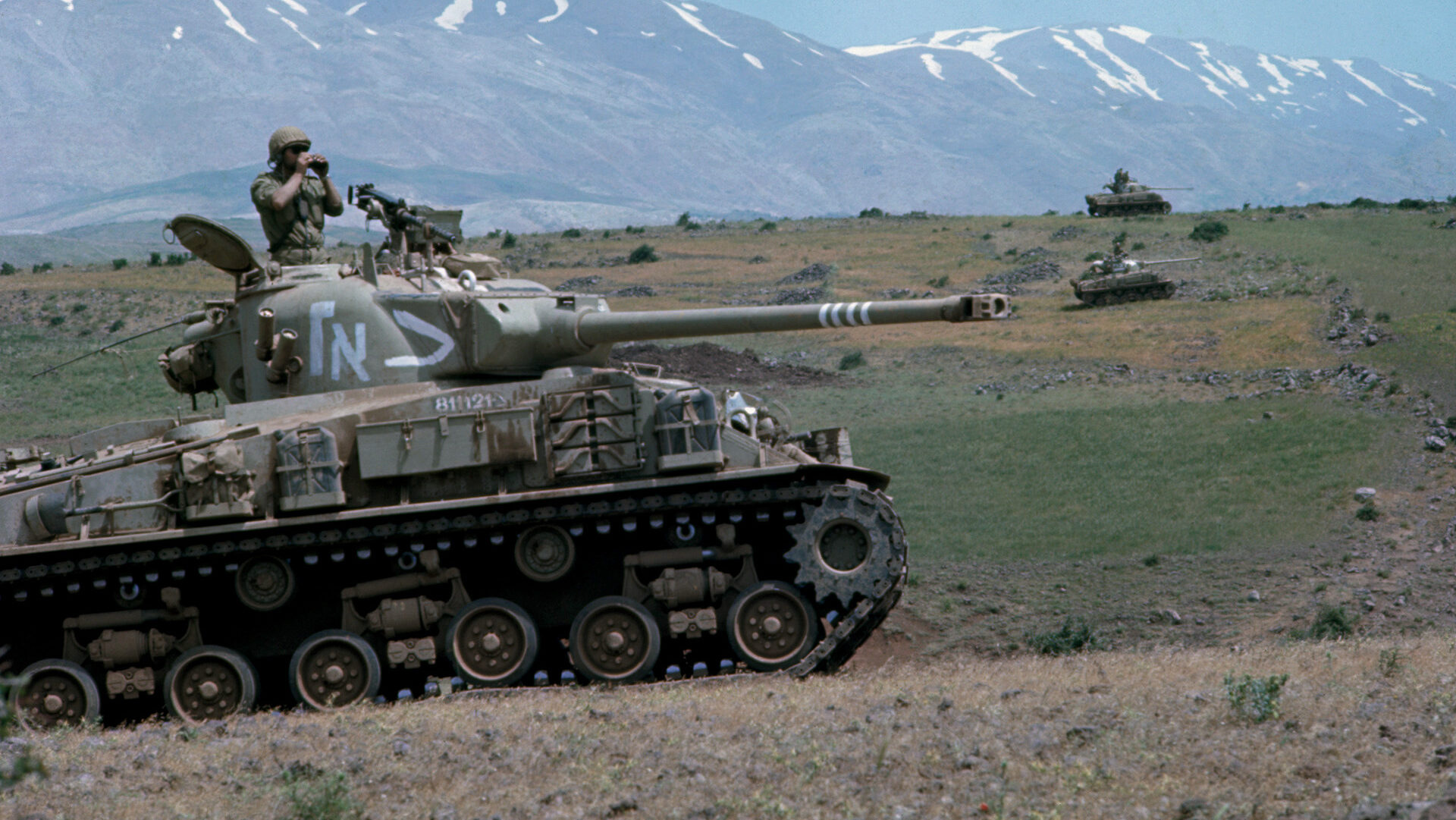
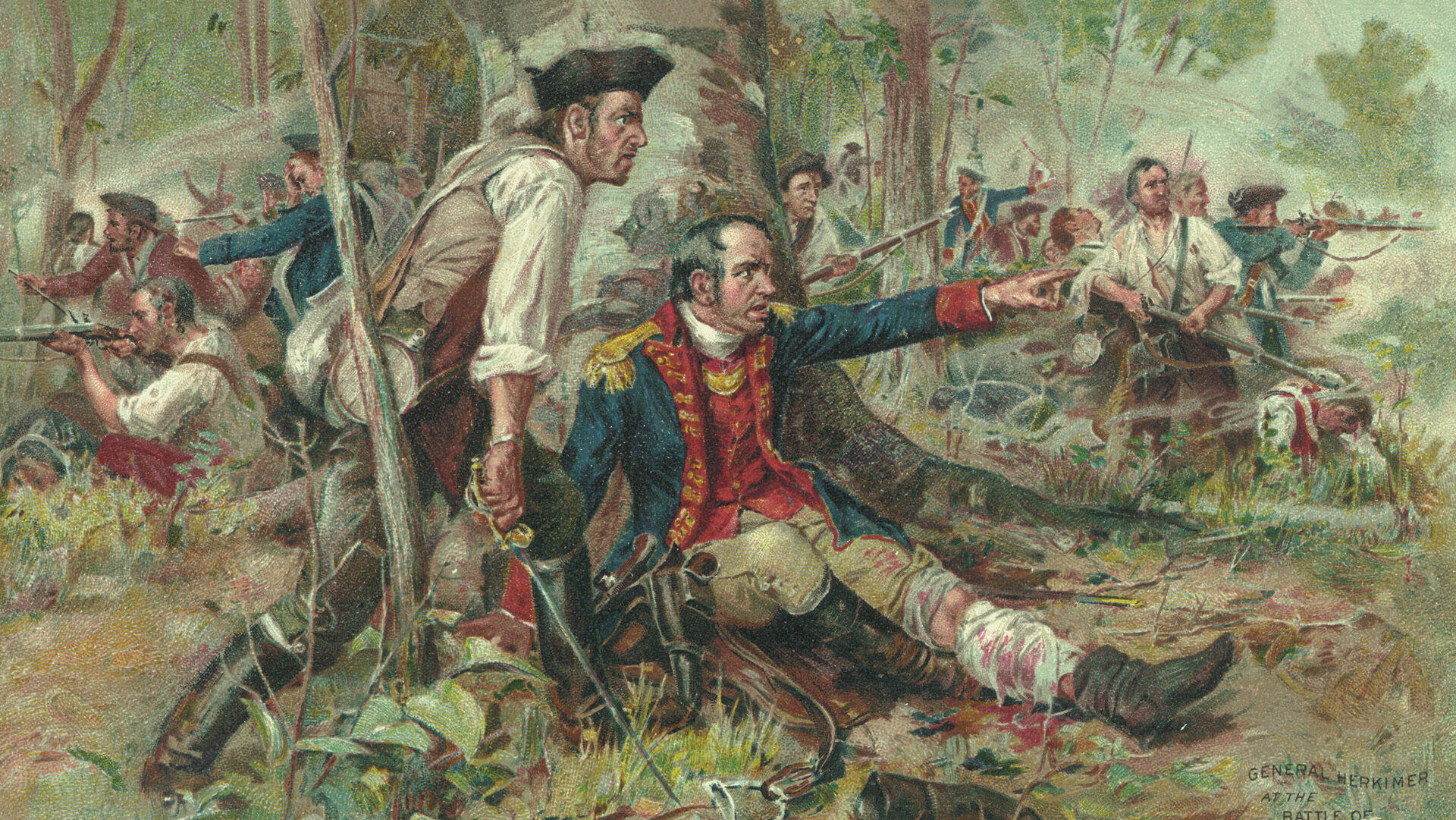
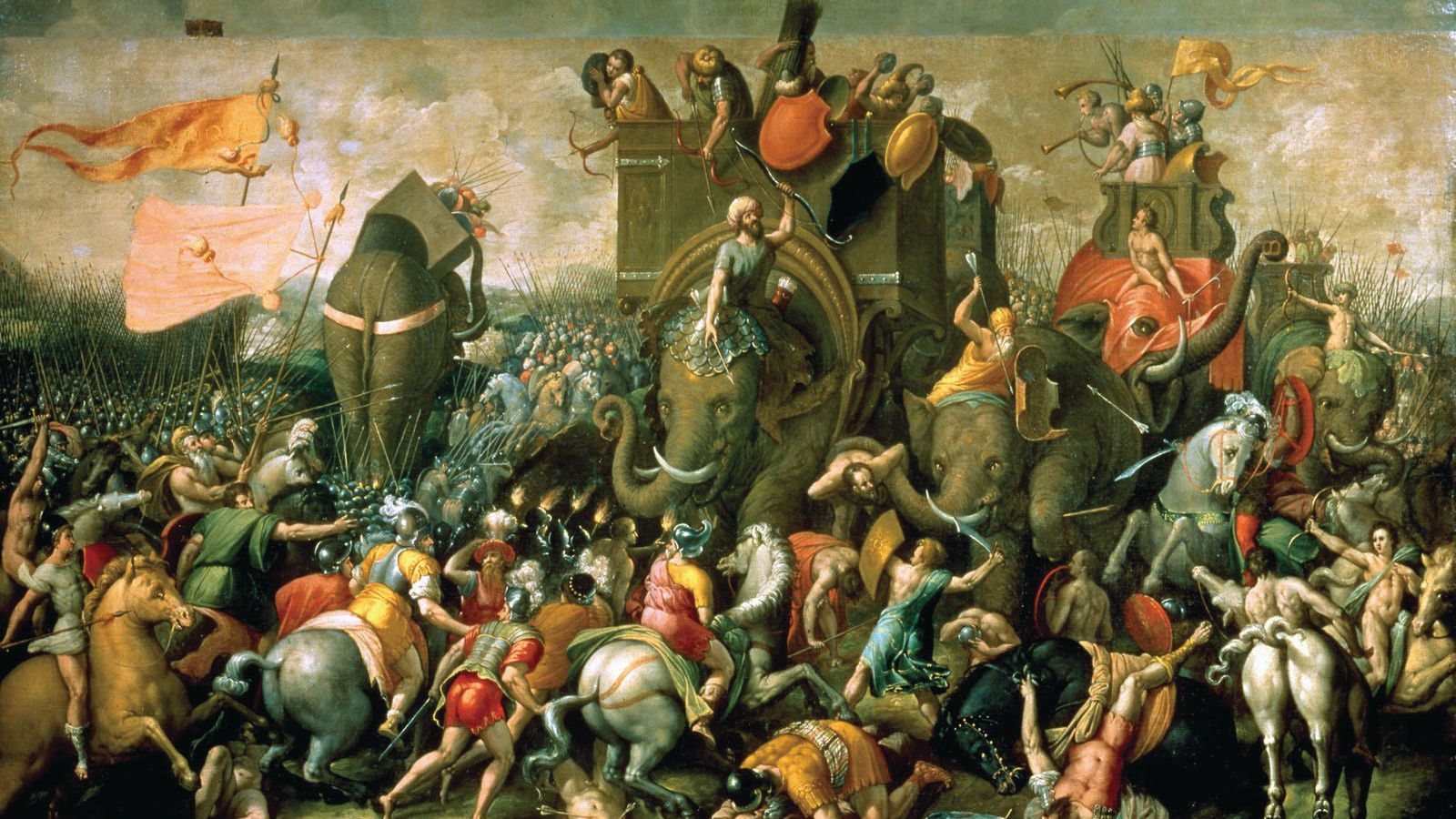
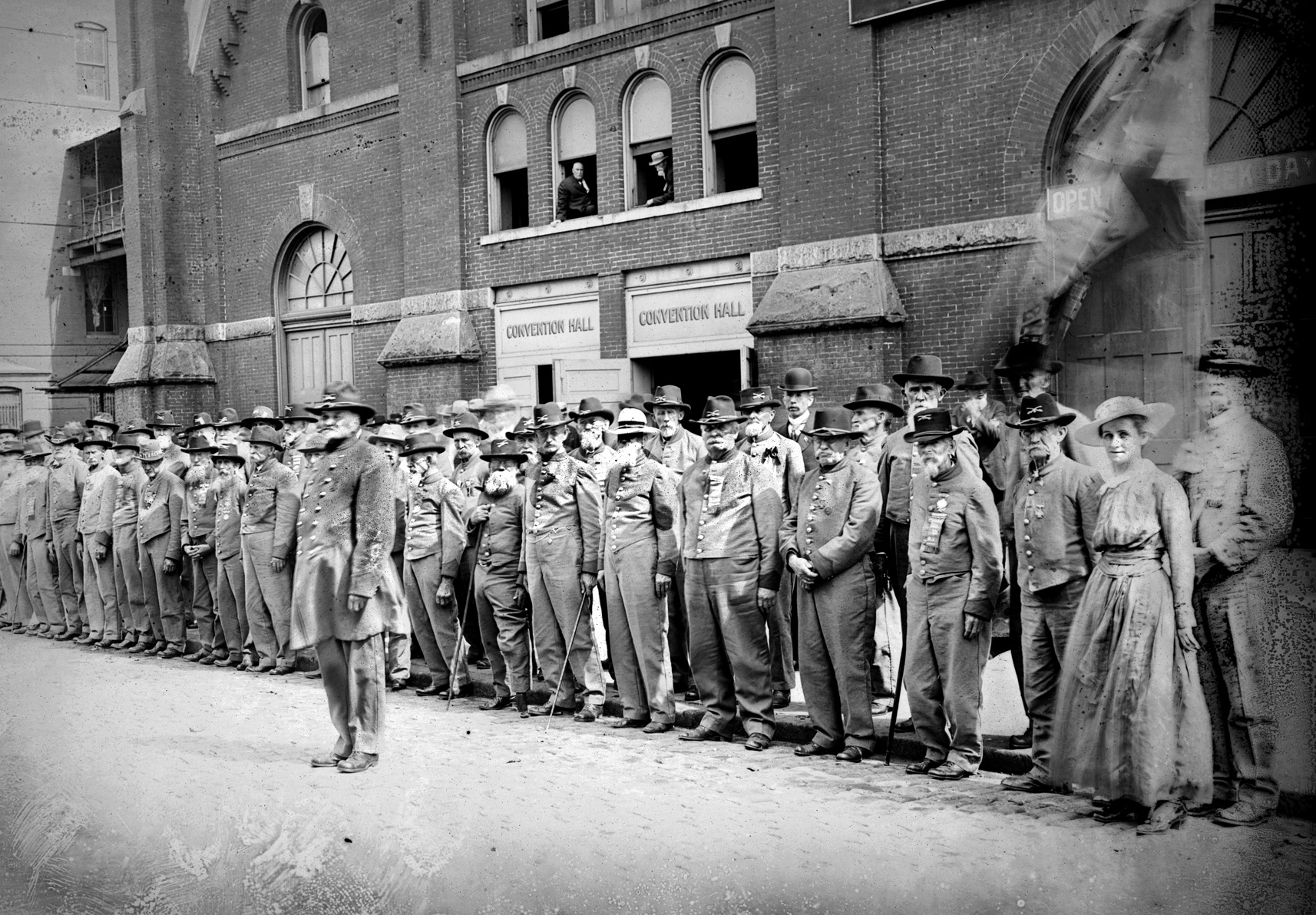
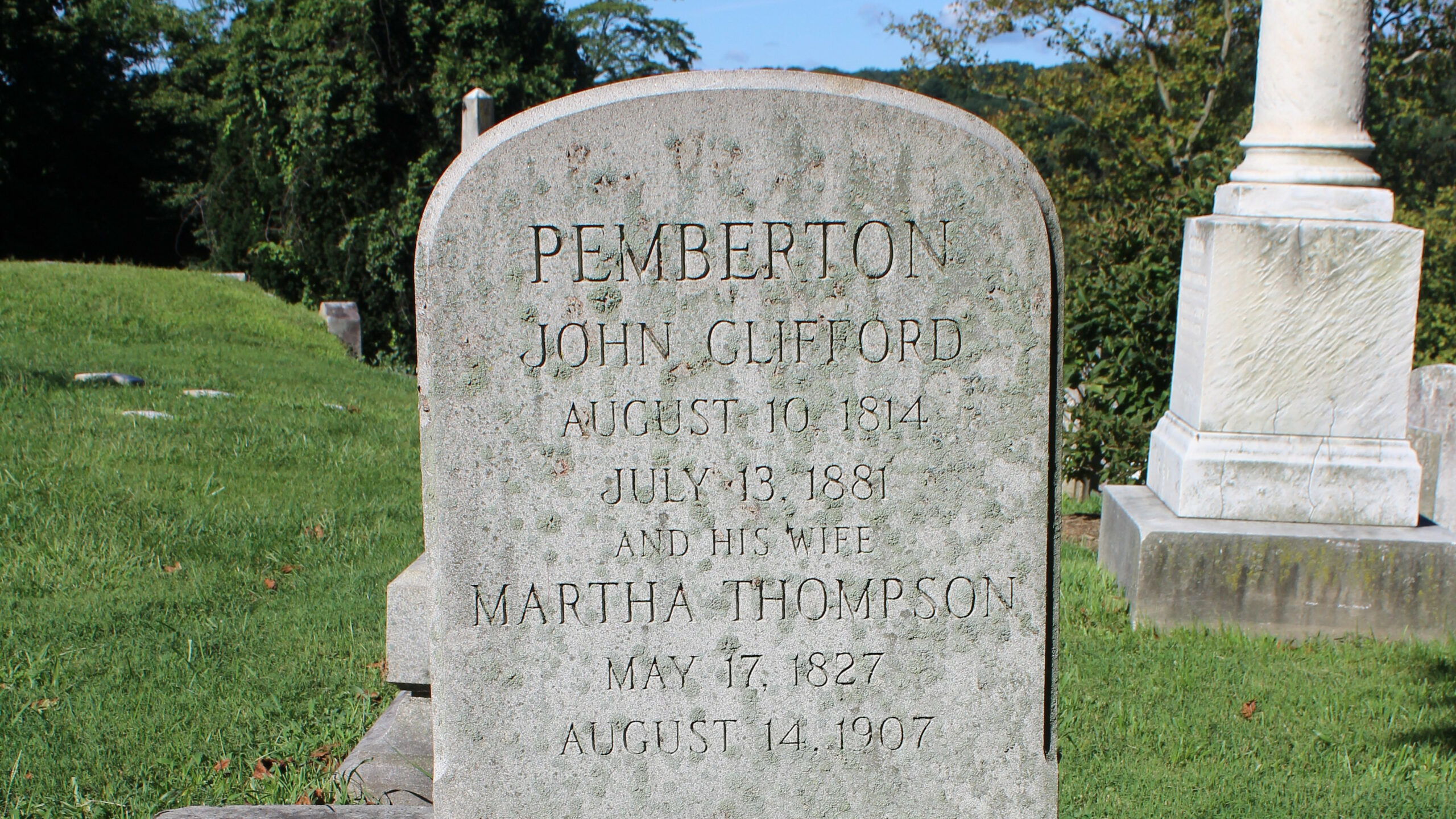
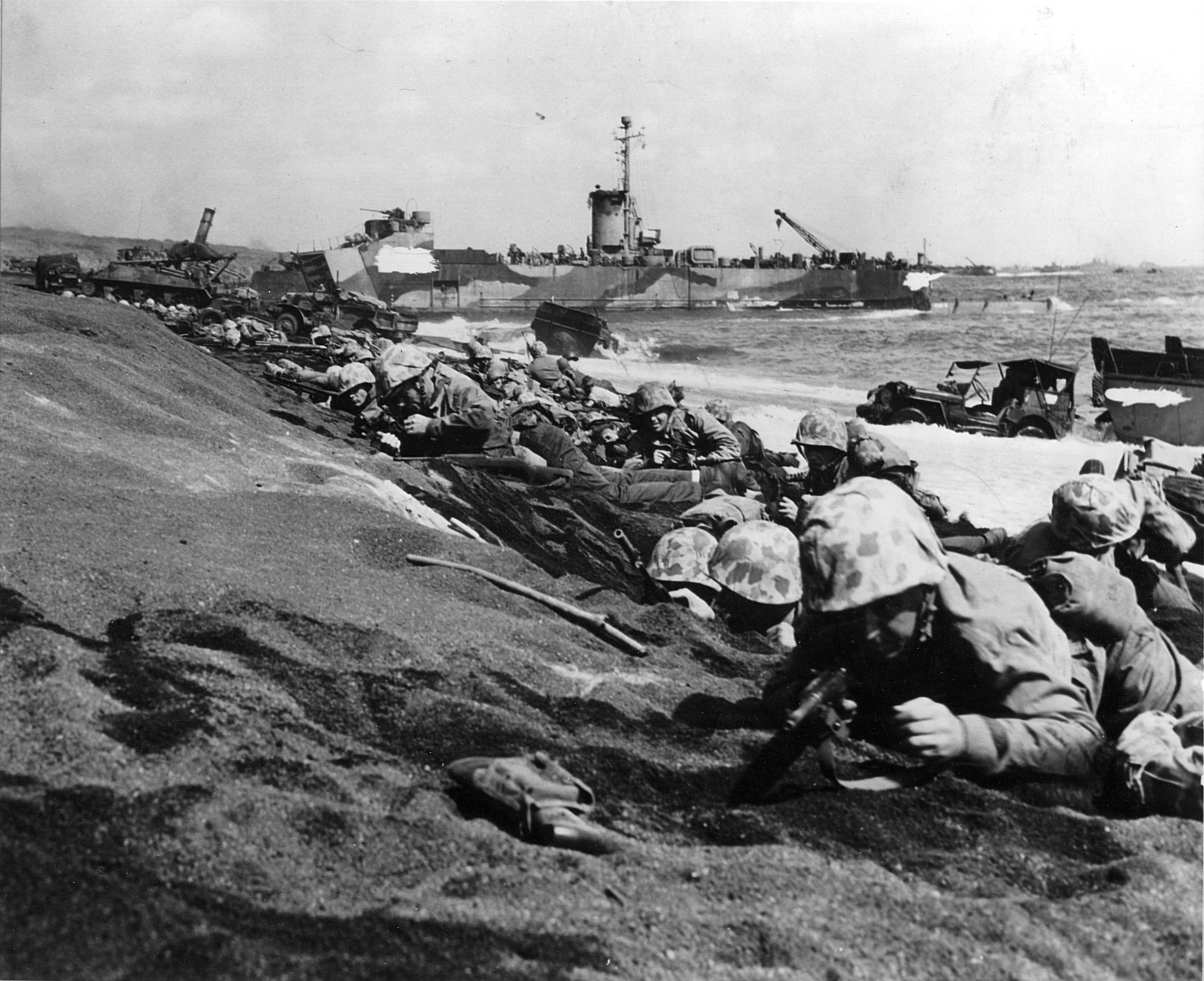
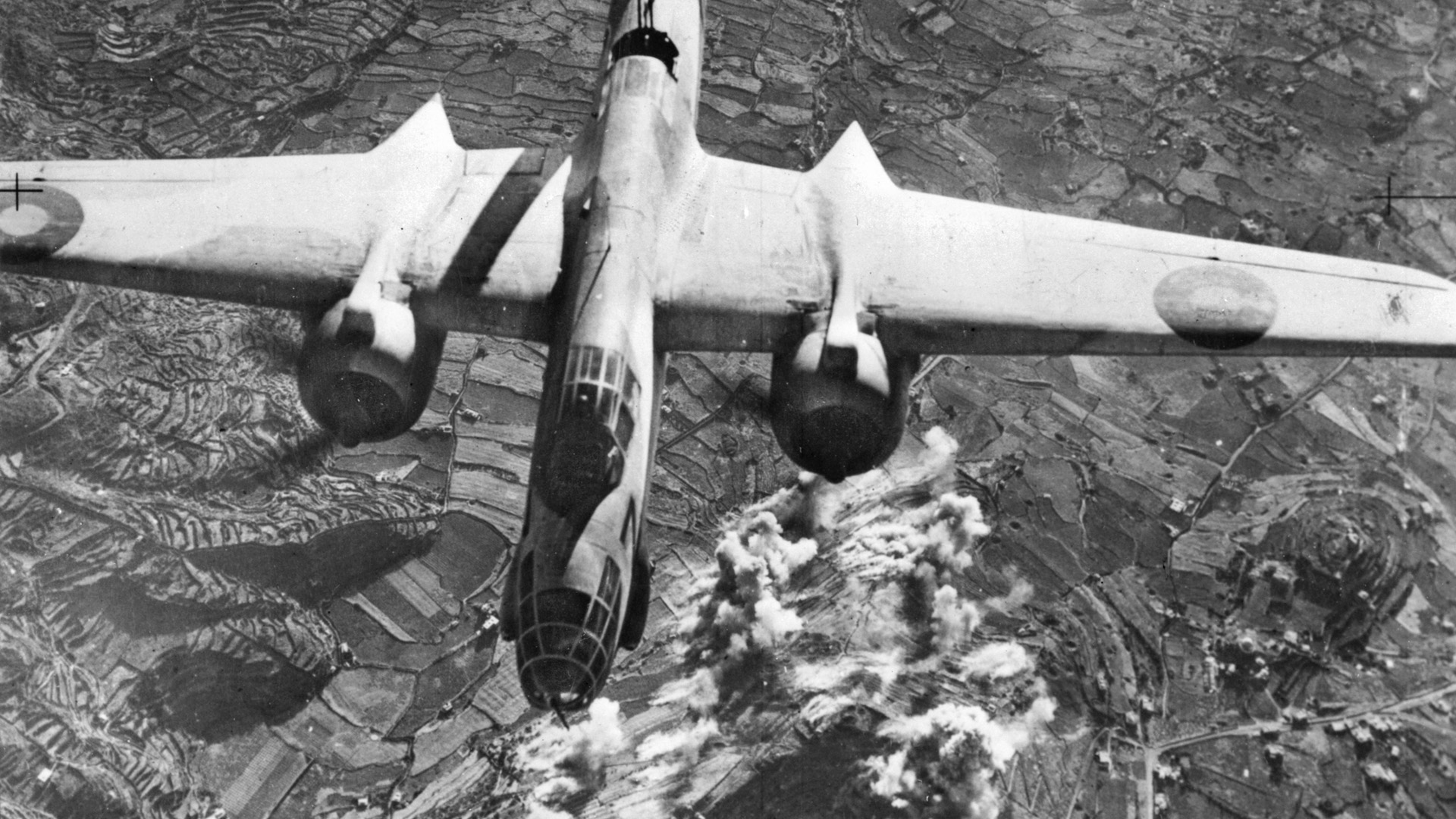
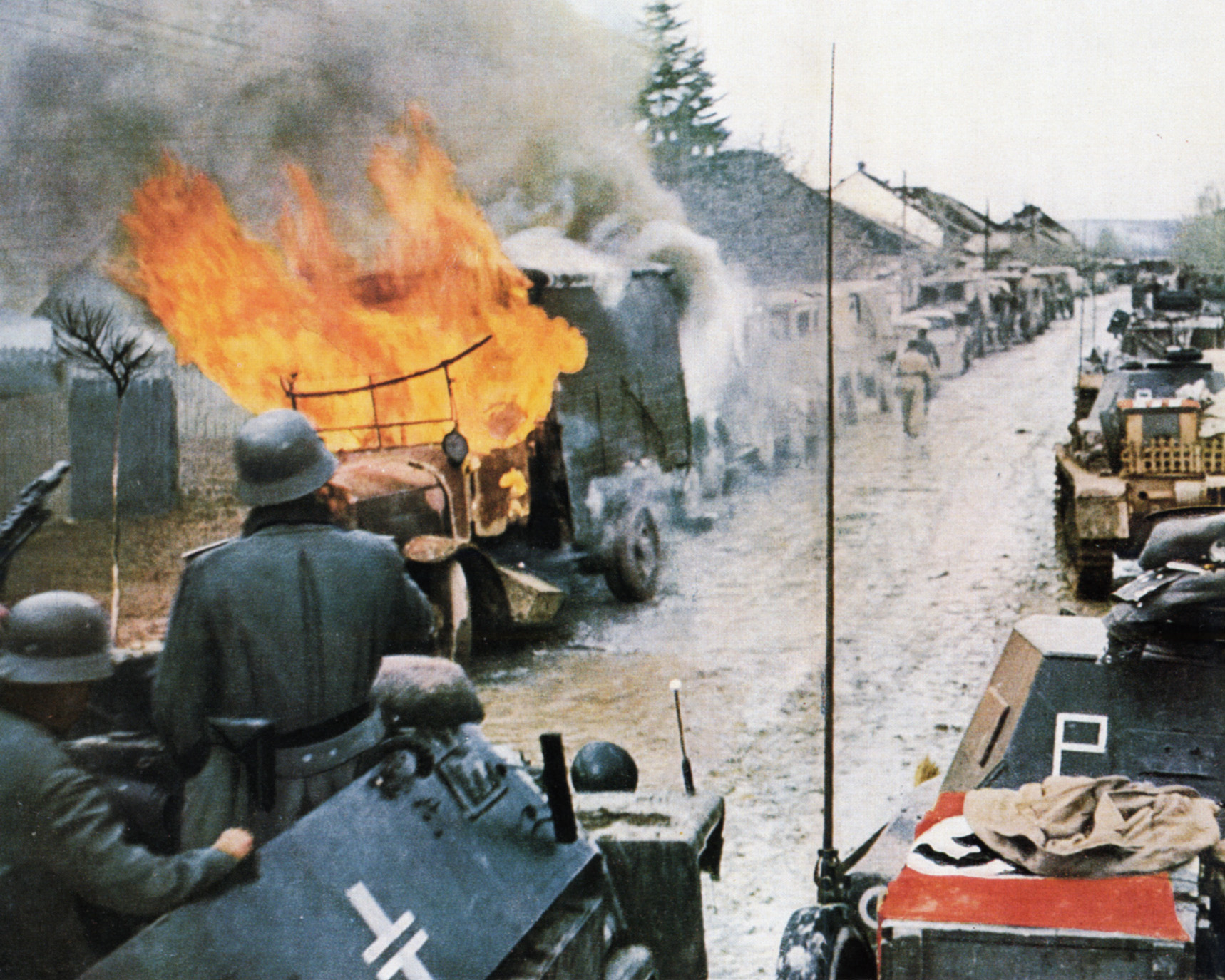
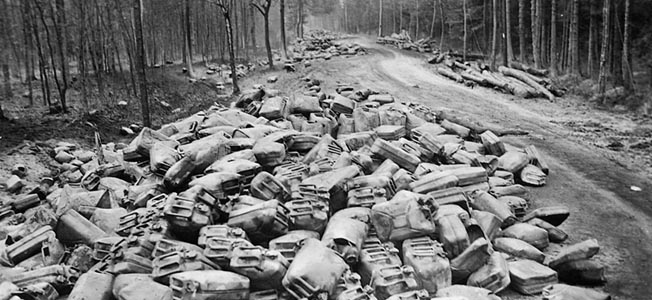
Join The Conversation
Comments
View All Comments